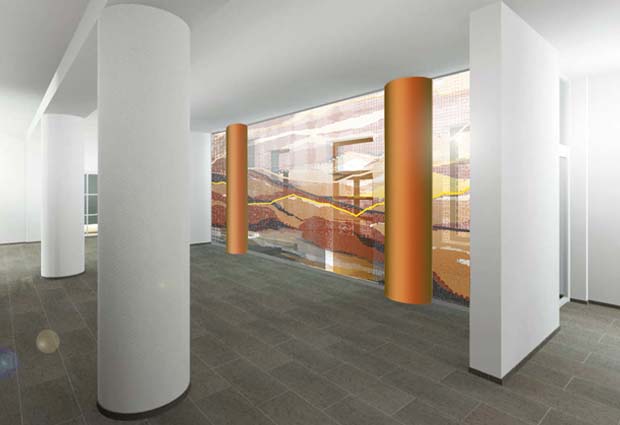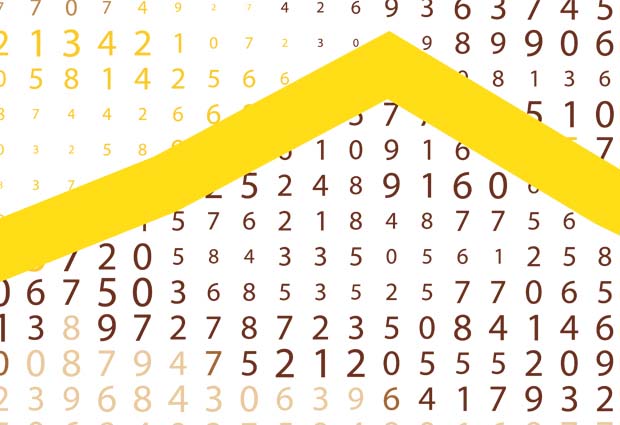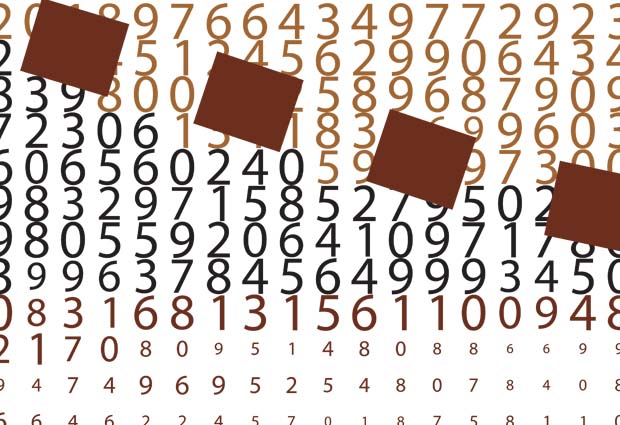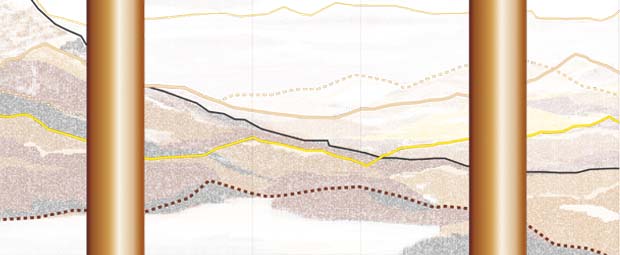MINISTRY OF ECONOMIC AFFAIRS AND EMPLOYMENT, ART COMPETITION 2016 – 2017
Artwork proposition: “Landscape of Labor Policy”
Address: Main lobby of Ministry of Economic Affairs and Employment (TEM), Aleksanterinkatu 4-10, Helsinki
Customer: Invitational competition, State of Art Commission
Principal designers: Jaana Partanen and Heikki Lamusuo
Pa-La-team: Outi Taskinen
Material of artwork: digitally printed glass
Partanen & Lamusuo participated in an invitation competition organised by the Finnish State Art Commission. The purpose of the competition was to obtain sketches for the artistic planning of the glass wall located next to the entrance of the Ministry of Employment and the Economy. Partanen & Lamusuo participated in the competition with its artwork Labour-policy Landscape. In all four proposals were submitted to the competition, and they were considered quite even and high-level. The victory of the invitation competition went to Maanantai Kollektiivi's Välke (Gleam) proposal.

Landscape of Labor Policy, artwork proposition. Digitally printed glass in shades of gold and bronze. Photo © Partanen & Lamusuo Ltd, 3D-picture © Architects' Office Laatio Ltd.

Landscape of Labor Policy, artwork proposition. Detail of artwork. Photo © Partanen & Lamusuo.

Landscape of Labor Policy, artwork proposition. Detail of artwork. Photo © Partanen & Lamusuo.
The Labour-policy Landscape is formed of the Ministry's research data, statistics, graphs and tables. Materials of Työpoliittinen aikakauskirja (Labour Policy Review) 4/2016 have been used as source material. Behind the tables is hidden the Finnish Labour-policy Landscape, formed of individual persons' stories, work careers, successes and also failures. People's stories draw daily graphs and number sequences studied on paper and computer screen, the past is summarised and the future planned. The collage formed of graphs, summaries and number sequence can be seen as a beautiful landscape through which it is possible to see another reality: everyday life in which people classified as numbers play the main role and live their lives between the Finnish bedrock and the starry sky.
The colour scale of the artwork: translucent colours glowing in gold and bronze form together with corten steel pillars uniform wow elements in the space. The use of glistening colours also gives each numbered individual a worthy position in the landscape glittering in colours of the sunrise and reacting to changes of the time of day and year. The artwork works both ways. You can view it as an art wall delimiting the space, but as it is partly transparent, you can also see through it.
The artwork was to be implemented by printing digitally within 8-millimetre thick laminated glass.

Landscape of Labor Policy, artwork proposition. Photo © Partanen & Lamusuo.